|
In Ken Burns’ Jazz, a documentary film series on the history of jazz music, we learn how this music form is truly “an improvisational art.” It is “America’s music,” as restless and yearning as the country itself since its beginnings and as much a multicultural melting pot. Jazz is filled with contradictions: both self-expressive and collaborative, anchored deep in the blues of the 19th century but always changing, steeped in its own particular traditions but reborn as something different every night, on every stage. Simple and complex, dressing up or dressing down depending on the moment, losing everything but still reveling in the power of love. Jazz also gave America its own collection of royalty: a king (Benny Goodman, the “King of Swing”), a duke (Duke Ellington), a count (Count Basie), a lady (Billie Holiday, “Lady Day”), a prince (Miles Davis, the “Prince of Darkness”), and many more. The new sound produced by these distinct personalities caused the entire world to get up and dance. Jazz remains one of the few uniting commonalities among Americans across multiple ages, backgrounds, and points of view. Telling the story of an American art From the ragtime tunes played at the turn of the 20th century, through the “hot” jazz of a generation later, to the cool fusion of recent years, jazz is truly, as the documentary’s trailer says, “America’s soundtrack.” Exploring Burns’ beloved 10-episode documentary series Jazz is one of the best ways to get acquainted with the rich and varied history, the sheer artistry, and the moving human stories of this uniquely American musical form. As the New York Times’ review of the documentary noted at its debut, it is not too far-fetched to claim that, through its ability to mingle and blend a diverse group of people and cultures over the past century and more, jazz has given us a way of “mirroring the ideals of democracy.” Now, Burns and PBS have made full-length episodes of Jazz available for free on the PBS website, bringing the documentary within reach of home educators everywhere. Fans can also purchase the DVD or Blu-ray set or the accompanying richly illustrated book Jazz: A History of America’s Music, by Geoffrey C. Ward and Ken Burns. A rich mixture of everything good The first episode of Jazz, “Gumbo,” introduces us to jazz’s origins. With deep roots in the African American spirituals and work songs dating from the days of slavery, amplified by soul-stirring New Orleans blues, jazz came into its own as a distinct musical voice in the 1890s. In this chapter, we meet the Black musicians who took these elements, mixed in the vibrant local sounds of marching bands, Caribbean beats, Italian opera masterpieces, and minstrel show tunes, and set it all to the quick-time syncopation of ragtime—this was a gumbo unlike anything American had seen. They named a decade after it Episode 2, “The Gift,” tells the story of the 1920s Jazz Age as jazz spreads far beyond New Orleans. Paul Whiteman develops a symphonic style of jazz, slower and sweeter, with a new appeal to “mainstream” white listeners. Louis Armstrong comes out of the streets of New Orleans to Chicago and assembles a powerhouse band of both Black and white musicians whose swing style electrifies a new generation, as Duke Ellington sets up his ensembles in New York’s Harlem and introduces his smooth blue style. Episode 3, “Our Language,” takes us through the rest of the Jazz Age when voices of solo singers like Bessie Smith take the spotlight, and as jazz proves to be the ticket out of limited circumstances for clarinetists Benny Goodman and Artie Shaw, both sons of Jewish immigrants, while Duke Ellington begins his storied tenure at the Cotton Club. Swing tunes and roadhouse stomp In “The True Welcome,” Episode 4, we learn how jazz proves one of the few joys left to a nation sunk in the depths of the Great Depression. Swing music and dance take center stage in Episode 5, “Swing: Pure Pleasure.” Episode 6 shows us “The Velocity of Celebration,” as the 1930s move into the ‘40s, bringing with it a new sound: the pounding, stomping, blues-laden sound that starts in Black American juke joints and roundhouses, soon wildly popular as played by Lester Young and Count Basie. Benny Goodman delivers a legendary performance at Carnegie Hall, Billie Holiday makes the grim lyricism of the anti-lynching song “Strange Fruit” her signature, and a young unknown singer named Ella Fitzgerald steps in front of a mike for the first time. Plus, Duke Ellington takes a triumphant tour of Europe as the events unfold that will soon ignite World War II. The soundtrack of modern American life Episode 7, “Dedicated to Chaos,” demonstrates the powerful role of jazz in lifting the morale of the troops overseas as it embodies the spirit of individual freedom and democracy in every irreverent, improvisational note. Arranger Billy Strayhorn joins Duke Ellington’s band, lifting its performances into a new level of sublimity. And Charlie Parker on saxophone and Dizzy Gillespie on trumpet join virtuoso forces on the now-iconic “Koko,” which opens the floodgates of bebop style.
In “Risk,” Episode 8, jazz changes as the world does. The Cold War brings undreamt-of peace and prosperity in the shadow of nuclear annihilation, as well as a new dissonance, broken rhythm, and sense of tension to America’s favorite musical form. In Episode 9, “The Adventure,” we see how widespread access to the trappings of popular culture and television, along with the other amenities of a comfortable suburban existence, overlay a growing sense of crisis in the music as well as in everyday life. And in “A Masterpiece by Midnight,” the series concludes in the 1960s and early ‘70s, with jazz quickly losing ground to rock-and-roll. We lose legends John Coltrane, Louis Armstrong, and Duke Ellington, while numerous surviving jazz greats struggle to make ends meet. Miles Davis takes his gifts as trumpeter and composer in a new direction, creating fusion, a blend of jazz and rock, and a flurry of blended styles emerge. Trumpeter Wynton Marsalis, whose commentary and reminiscences as senior creative consultant expanded and enriched Burns’ series, said in a 2001 interview that jazz is a reflection of the totality of the Black American experience in its ability to improvise, to take a theme and shape and change it, and to expand boundaries and create new possibilities in ways that no one had ever thought of before. The precise origins of jazz as a distinct musical art form remain a matter of contention among experts and fans, and researchers learn new information about its development seemingly every day. The first documented jazz recording is one central point of entry that can help us understand its history. That recording was made on February 26, 1917, at the Victor Talking Machine Company’s offices in New York City. That was the day the Original Dixieland Jazz Band (whose name originally used the spelling “jass”) quintet recorded the tune “Livery Stable Blues.” While the Chicago-based ensemble’s “Tiger Rag” would prove far more influential, “Livery Stable Blues” is acknowledged as the first. Among today’s listeners, the song may sound silly, with the instruments imitating barnyard animal sounds, and the recording quality is not the best. (Interested fans can hear the full recording in numerous venues online, including an uploaded Smithsonian magazine article celebrating the recording’s centenary.) The Original Dixieland Jazz Band The Original Dixieland Jazz Band (ODJB) brand included shiny black dinner jackets over white, buttoned-collar shirts. ODJB was a publicity-seeking group, whose public cavortings received widespread media coverage. At the time they cut “Livery Stable Blues,” the group was performing to large and adoring crowds in New York at Reisenweber’s Café near Columbus Circle, not far from the current site of Jazz at Lincoln Center. Musicologists know that this all-white band had shamelessly borrowed both style and substance from music they’d heard played by African American bands back home in New Orleans. The recording of “Livery Stable Blues” went on to become one of the first-ever hit singles, with estimates of copies sold ranging from between about 250,000 to 1 million. From spirituals to a cosmopolitan blend of soundThe origins of jazz lie squarely in the African American experience. Its notes outline the story of Black life in America, with all the pain, sorrow, triumphs, and joy that the community has experienced since long before the founding of the country. For example, the genre’s blue notes offer a modernized take on the sounds of slave spirituals and work songs. Its fast-paced syncopation and swinging exuberance went on to drive the boogie-woogie beats of the many tenement “rent parties” popular among growing Black populations in New York and other big cities from the 1920s until after World War II. Most scholars date the birth of jazz as an identifiable style to the honky-tonks, barrelhouses, and saloons of Storyville, the New Orleans red light district that flourished from 1897 to 1917. Tuxedo Dance Hall and other venues gave budding composers and performers the opportunity to hone their skills and improvisational ability in front of largely mixed-race audiences. The whole of the district was filled with opportunities for work for Black musicians and composers, and the likes of Louis Armstrong, Jelly Roll Morton, and Joe “King” Oliver all got their starts there. The original New Orleans jazz sound drew from the city’s rich history and ethnic mix. Originally a French, then a Spanish colony, the city was already steeped in a distinctive musical culture by the time it was incorporated into the United States as part of the Louisiana Purchase in 1803. It continued to retain its cosmopolitan outlook and its love of music, dance, and spectacle. The city’s large population of Creole people of color—with a heritage in both African and European roots—was a particularly distinguishing factor. People from a variety of backgrounds lived close together in New Orleans’ narrow streets and squares, resulting in a true blending of cultures and musical sounds. Brass bands, ragtime, and the journey north Beginning in about 1890, brass bands were also a big part of the music scene in New Orleans. In those days, before the city had put up the type of “Jim Crow” color barriers, these bands were often integrated. So, while the roots of jazz lie squarely in the African American tradition, its growth was nourished by numerous multicultural influences. The musical traditions developed through African American funerals and mutual aid society parades met the sounds of ragtime and dance bands and the city’s many ethnic communities’ Mardi Gras walking clubs, all establishing a uniquely New Orleans quality.
Morton, Oliver, Armstrong, and their contemporaries built distinctive personal styles, and all three were among the many Black innovators who went north to Chicago to perform in the days after World War I. It was they who formed a recognizable nexus at the core of building the sound we know today as classic jazz. A traditional three-piece jazz band consists of a piano or organ, double bass, and drums or another type of percussion to keep the beat. Renowned San Francisco Bay Area bassist, bandleader, and music educator Marcus Shelby offers a fine example of this standard jazz configuration in the many recordings and performances of the Marcus Shelby Jazz Trio. Shelby’s ensemble expands to accommodate different types of performances and offers excellent examples of different configurations of the jazz band. His quartet adds a trumpet, and his quintet uses all these instruments plus a tenor saxophone. A typical configuration for the full Marcus Shelby Jazz Orchestra features all these instruments and more, with two tenor sax players, two on alto sax, a flute, piano, and drums, along with several clarinets, trombones, and trumpets. This complement of more than a dozen performers often features vocalists, which is typical of all types of jazz. John Brown, another widely accomplished and popular bassist, bandleader, and educator, performs throughout his home state of North Carolina and beyond with his big band orchestra. In the standard configuration of the John Brown Jazz Orchestra, the big band sound comes from five saxophones, four trombones, and four trumpets, plus drums, piano, and bass. The orchestra also sometimes brings in a vibraphone, clarinet, violin, and vocalists. These are just two prominent examples of a universal truth: the standard jazz orchestra is a diverse group of instruments that together make beautiful music. After this tour around the full jazz orchestra, now we’ll take a look at a few of the great jazz band solos of all time: Trumpet Dizzy Gillespie (1917 - 1993), one of the greatest trumpet players the world has ever seen, and a master of bebop, delivered an especially notable trumpet solo with “Salt Peanuts.” Gillespie first performed his jazzy bebop composition (for which he shares composer credits with drummer Kenny Clarke) in 1942. He is accompanied by the great Charlie Parker playing alto saxophone. Gillespie’s integration of bebop into a jazz composition was a major innovation for its time. The song is deceptively simple and effervescent, and it moves in a typically frenetic bebop style. Gillespie’s trumpet solo weaves against the background provided by the sax, trombone, drums, and piano. The tune includes witty vocal interpolations of the phrase “salt peanuts” as the only lyrics, repeated at musically opportune moments. In later years, Gillespie’s inventiveness and stage presence earned him the nickname “Ambassador of Jazz.” He traveled the world on behalf of the United States Department of State to highlight his uniquely American art form. As he performed “Salt Peanuts” over the decades, Gillespie branched out with a number of different vocal riffs on the original. Now-classic recordings from 1945 showcase Gillespie’s performance on the piece at its best, before a traffic accident a few years later sadly injured his mouth and put limits on his range. SaxophoneCharlie “Bird” Parker’s (1920 - 1955) solo sax on “Ko Ko” is one of many jazz fans’ all-time favorites. One of the greatest improvisers and innovators of all time, Parker demonstrated a creative depth and range that easily places him alongside Ornette Coleman, Django Reinhardt, Louis Armstrong, and John Coltrane as the greatest of the great. Along with Dizzy Gillespie, he is credited as a central figure in the creation and development of bebop. “Ko Ko” represents Parker’s first-ever recorded piece as a bandleader, and he took the opportunity to show the full capacity of the bebop form, evolving its rapid-fire chord changes and high-octane melodic escapades as he played. He developed “Ko Ko” as his own personal take on the popular 1930s Ray Noble dance tune “Cherokee,” and recorded it in its essential form in 1945. On “Ko Ko,” Parker also shows off his understanding of rhythm and harmony to dazzling effect. Performing “Ko Ko” most notably accompanied by “Diz” on trumpet, Parker delivered a short tune with a simple compositional architecture. Recordings of the just-under-three-minute song give us an opening meld of sax and trumpet, followed by the two instruments exchanging eight-bar phrases to end abruptly with a final pop of sound. ClarinetBenny Goodman (1909 - 1986), one of the greatest clarinetists to ever perform, was also a noted bandleader and composer. The “King of Swing” created a wide range of now-iconic performances and developed his mastery of his instrument to a high art. One of his very early solo recordings, from 1928, offers an example of the range and power of the clarinet and Goodman’s musicianship.
This early version of “That’s a Plenty” (lyrics and music by Ray Gilbert and Lew Pollack) was recorded with piano and drum accompaniment when Goodman was not yet 20. He also recorded other performances of the song in later years. Although his playing had not yet reached its full capacity and the sound is less polished on the 1928 recording, Goodman’s raw forward drive in executing the piece is notable and exciting. A number of fans and critics point out the influence of klezmer, traditional Eastern European Jewish band music, on Goodman, who was a child of Russian Jewish immigrants. “That’s a Plenty” and many of Goodman’s other performances certainly demonstrate echoes of the elegantly winding and infinitely danceable call of the klezmer clarinet. Goodman kept playing “That’s a Plenty” in a variety of settings and with a variety of accompaniments well into his later years, including in a notable 1980 performance at the Aurex Jazz Festival in Tokyo. The blues puts into music what we all feel when it seems like we just can’t go on: lost jobs, friends, love, and dreams. But the very music that was made to express the depths of despair can, by its very artistry, lift us up again. The blues is also cathartic. It’s about overcoming obstacles. The blues was born out of African American history. It traces its origins to plantation slavery, through the toiling oppression of the Jim Crow era, and into the days of escape to a completely new world during the Great Migration. Ultimately, the blues has its roots in African American work songs and chants, spirituals, and rural “field hollers.” It came to early maturity in the Mississippi River Delta around New Orleans, growing up alongside jazz, before branching out west, east, north, and finally around the world. Here is a look at three of the many distinctive styles of the blues that developed in the United States throughout the mid-20th century, along with portraits of three of their leading creators. Meade “Lux” Lewis’ piano-pounding boogie-woogieThe boogie-woogie blues, heavy on rhythm and percussion and with a varied and unpredictable style, was the first and only type of piano music born directly out of the blues. In boogie-woogie, the right hand’s riffs play off against the left hand’s ostinato drive. Boogie-woogie flourished from the beginning of the 1920s until the end of World War II in 1945. The word “boogie” referred to a house rent party among people living in tenements in big cities with large African American populations. Rent parties opened up new ways to socialize while helping to pay their rent during hard economic times. The ultimate source of the boogie-woogie style may have been the logging camps, gin mills, and other labor groups offering some of the few means of good employment available to Black workers in the early 20th century. Just as “field hollers” and hawking shout-outs were earlier, boogie-woogie rhythms were highly personalized. Meade “Lux” Lewis (1905-1964) was one of the driving forces behind the popularity of boogie-woogie and its rolling beat. Born in Chicago, “Lux” started out playing violin, but turned to piano in the ‘20s. In 1927, he recorded the enormously popular “Honky Tonk Train Blues,” a pull-out-all-the-stops cascade of sound, and a now-legendary piece in the blues catalog. His musically sophisticated tunes also included “Whistlin’ Blues,” “Bear Cat Crawl,” and “Low Down Dog.” By the mid-1930s, the song had fallen into obscurity, until Lewis was rediscovered while working in a car wash. Producer John Hammond reissued the song, and Lewis gained a brief nationwide fame before boogie-woogie faded from the charts. In the late 1930s, Lewis joined fellow boogie-woogie masters Albert Ammons and Pete Johnson in a series of star-studded “six-handed” performances, and his three film appearances include an uncredited role as a bar piano player in the 1946 Jimmy Stewart classic It’s a Wonderful Life. Lewis died tragically in a car accident in Minneapolis when he was only 58. Louis Jordan’s jumping saxJump blues was a highly danceable mix that blended blues, jazz, swing, and boogie-woogie. The style originated—just as boogie-woogie did—amid hard economic times, although jump blues was reaching widespread popularity as boogie-woogie was winding down. During and after World War II, full swing bands were too expensive, so bands scaled down to simply a rhythm section and often a single soloist. The smaller size enabled musicians to concentrate on innovating with a more fast-paced and uninhibited “jump” sound. Louis Jordan (1908-1975), saxophonist, singer, movie performer, and bandleader of the Tympany Five, as well as an accomplished all-around entertainer known as the “King of the Jukebox,” is credited as the originator of this style. Jordan’s talent shone on numbers like “Jumpin’ at the Jubilee,” “Is You Is Or Is You Ain’t My Baby,” and “Caledonia,” and he became one of the most popular and successful Black artists of the 1940s and ‘50s. The vibrant, bouncy rhythms and clever lyrics of his songs—not to mention his high-energy, engaging stage presence—made the Arkansas-born Jordan wildly popular with audiences of all backgrounds. In fact, he is one of the few African American artists to gain widespread acceptance among white fans of his era. He had at least four million-selling hit songs over his career, and in earnings and name recognition ranked near Duke Ellington and Count Basie among African American musicians of his day. Numerous critics consider “Caledonia” (1945) to be the immediate ancestor of rock and roll. Jordan is also often credited as the father of rhythm and blues and rap. The growth of Chicago blues followed right along with the growth of the Black population of major northern cities. During the Great Migration that began in the final years of World War I and that continued into the 1970s, some 6 million African Americans picked up everything and moved from the rural, segregated South to the industrial and at least nominally more accepting cities of New York, Philadelphia, Detroit, and Chicago. And they took their music with them. Alongside New Orleans and Austin, Texas, Chicago remains one of the three key cities involved in the development of the blues art form. The blues musicians who moved north continued the evolution of the sound as it played out in people’s everyday lives on street corners, in open-air markets, at rent parties, and a host of other community events. Buddy Guy’s electrified ChicagoThe rough-and-tumble action along the city’s streets was further inflected by emerging technologies that amped it up with an electric beat, forming the nexus of a new kind of club atmosphere. Chicago’s South Side saw numerous Black-focused blues clubs spring up, including big names such as Smoke Daddy, Ruby Lee Gatewood's Tavern, and Blue Chicago.
Also think Buddy Guy’s Legends. Buddy Guy, now age 84, is among Chicago’s blues greats. Born in Louisiana in 1936 as George Guy, the legendary guitarist is world-famous for his lightning electric riffs, accompanied by his deeply felt vocals. In the 1990s, Guy’s popularity soared again after an already distinguished four-decade career, and he continued touring and performing live until the coronavirus pandemic hit in early 2020. His hits include “Stone Crazy,” “Damn Right I’ve Got the Blues,” and “Leave My Girl Alone.” When barely into his teens, Guy made his own guitar and learned to play by listening to the radio, copying previous legends such as John Lee Hooker. After performing in New Orleans clubs, he relocated to Chicago in his early 20s and was discovered by yet another legend, Muddy Waters. Guy continued learning from the best, as he worked alongside performers like Little Walter, Howlin’ Wolf, and Koko Taylor. He is the recipient of multiple Grammy awards, including a 2015 Grammy for Lifetime Achievement. Rolling Stone magazine caught up with Guy in June 2020, when he noted that he was then in the longest hiatus of his career due to the nationwide shutdowns of performing arts venues. Guy’s club also suffered damage amid rising protests against police brutality. But the bluesman remained upbeat, saying that the outpouring of people into the streets demanding justice might be just what the country needs to finally set things right. One of the few music genres to truly originate in the United States, jazz was first developed in New Orleans, Louisiana. It was influenced by the sounds of the blues, ragtime, and traditional funeral music from the South. Generally a fast-paced genre, it is distinguished by its improvisational nature, syncopation, bent notes, and the “swing” created when musicians accent the beat by adding unexpected rhythm on the offbeat of a song. To understand the spirit of jazz, one must understand the components that create its style. Listed below are the most common instrumental elements in the jazz genre. Rhythm section instrumentsTo play standard jazz, a band needs rhythm instruments to provide percussion, a bass line, and harmony to its songs. The most common rhythm instruments in a jazz ensemble include bass, drums, piano, and guitar. Bass Though it can’t be heard as distinctly as other instruments, the bass plays a crucial role in jazz songs, laying a rhythmic foundation for the other instruments while simultaneously providing harmonic support. Early jazz bass lines were played on upright bass, though a majority of jazz bassists today prefer to play on electric models. Jazz bass is often played in the pizzicato style, in which a player forcefully plucks the instrument’s strings rather than strumming or tapping them. Drums As with many forms of contemporary music, the drums in jazz are responsible for pushing the movement of a song by keeping the beat. A jazz drummer, however, has the added responsibility of periodically altering his or her playing style to complement other musicians as they solo during a performance. This can mean that a jazz drummer plays softer in some parts of a song and then returns loudly in others, or may alter a beat mid-song in order to accent the notes of a soloist. Much of a jazz drummer’s performance is improvisational, as he or she must be able to react according to the improvisation of the lead musicians. Piano Jazz piano can be both a rhythm instrument and a harmony instrument. It can be played in such a way that it provides percussion to a song through a technique called “comping,” or it can be played softly, using single keys to create a melody. Jazz pianists often play rhythm with one hand while playing a melody with the other. The instrument’s 88 keys provide musicians with a wide range of notes to work with, giving it a dynamic role in jazz performance. Guitar Like a pianist, the guitar player in a jazz ensemble can play a single-note melody in a song, or may play percussively, comping full chords to provide rhythmic support to the rest of the band. Some musicians will choose to use a solid body or semi-hollow body electric guitar in a jazz ensemble. However, hollow body archtop guitar has been a popular choice for jazz music since as early as the 1920s. Horn section instrumentsThe horn instruments in a jazz ensemble are a collection of brass and woodwind instruments that are responsible for playing the melody of a song. The most common instruments in the horn section are the trumpet, trombone, and saxophone. Trumpet The trumpet is an iconic jazz instrument, first popularized by the likes of Louis Armstrong in the 1920s. Made from brass, the sound is controlled by three valves on the top of its body, which manipulate the notes created by a musician as he or she vibrates the lips and pushes air through the mouthpiece. Even with only three valves to work with, trumpet players are able to produce 45 distinct notes on the instrument, which they use to perform the energetic solos characteristic of jazz music. TromboneThe trombone is another brass instrument used to play melodies and solos in jazz songs. As with the trumpet, a trombone player vibrates his or her lips against the mouthpiece while blowing air into the instrument. A player uses a slide on the trombone’s body to change the pitch of the sound, producing loud, powerful notes that command attention during jazz songs. Saxophone Though it is made out of brass like the trumpet and the trombone, the saxophone is considered a woodwind instrument because of its single-reed mouthpiece. The saxophone’s brass body, combined with its woodwind mouthpiece, produces an intense vibrato in its notes, creating a popular, distinct sound. There are five different kinds of saxophone, including the soprano, alto, tenor, baritone, and bass sax, with tenor and soprano being the most frequently used in jazz bands. The voice as a jazz instrumentThough ensembles within the genre are frequently instrumental, some of the most popular jazz songs of all time feature vocalists. Singers like Billie Holliday, Ella Fitzgerald, and Frank Sinatra all saw great popularity due to their work as jazz singers in the middle of the 20th century.
To perform jazz, vocalists sing at a pitch that is similar to a speaking tone. Professionals suggest that your singing voice in jazz should be a musical extension of the tone you use when talking. A jazz vocalist may also choose to employ an improvisational singing technique known as scat singing. To scat, a vocalist will periodically use emotive nonsense words or syllables to mimic a sound similar to that of a jazz instrument. |
Photo used under Creative Commons from Marina K Caprara
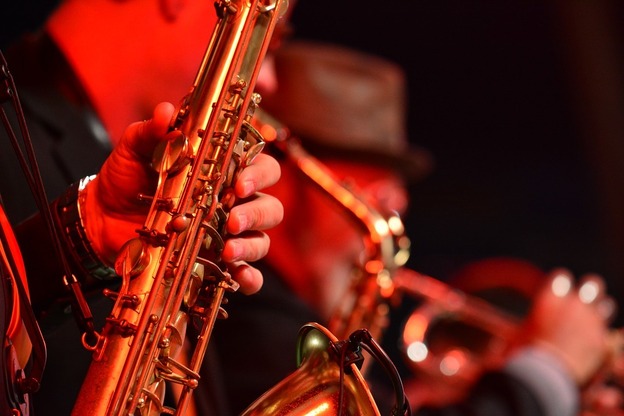
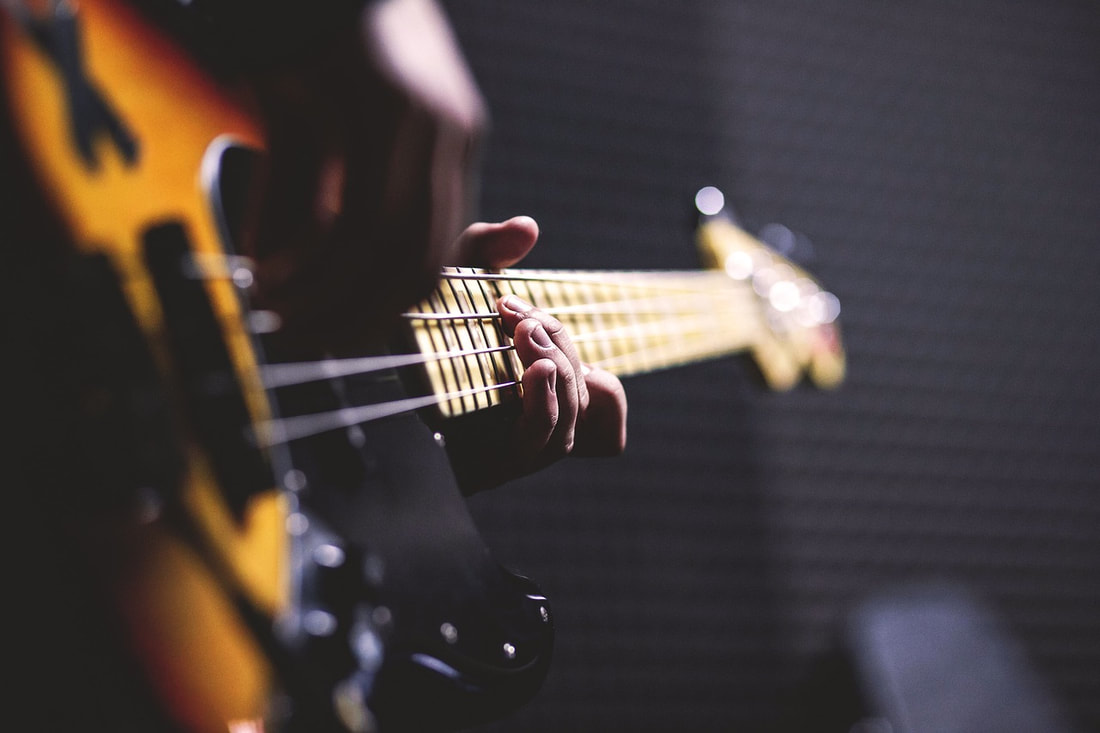
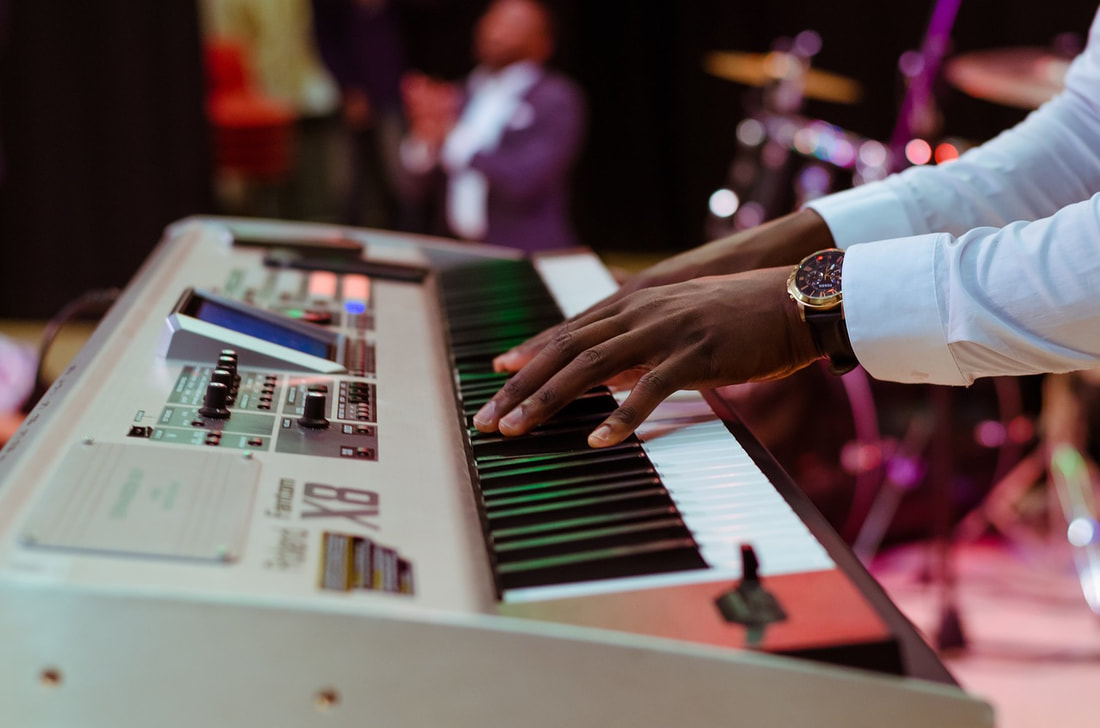
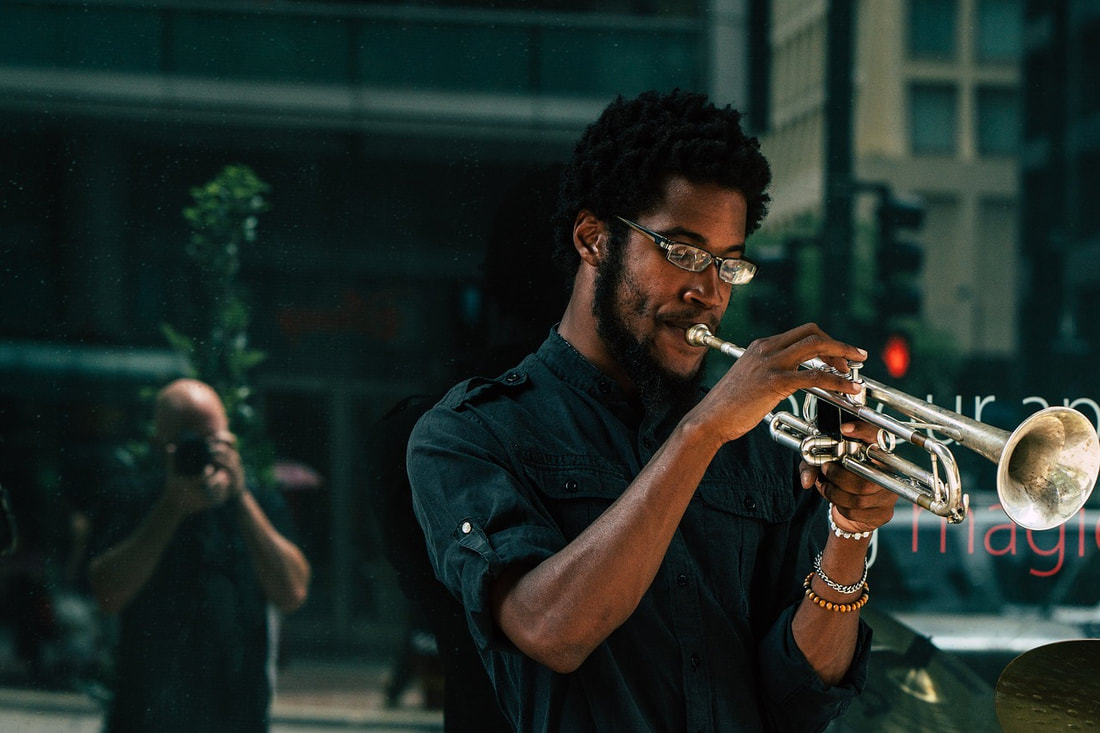
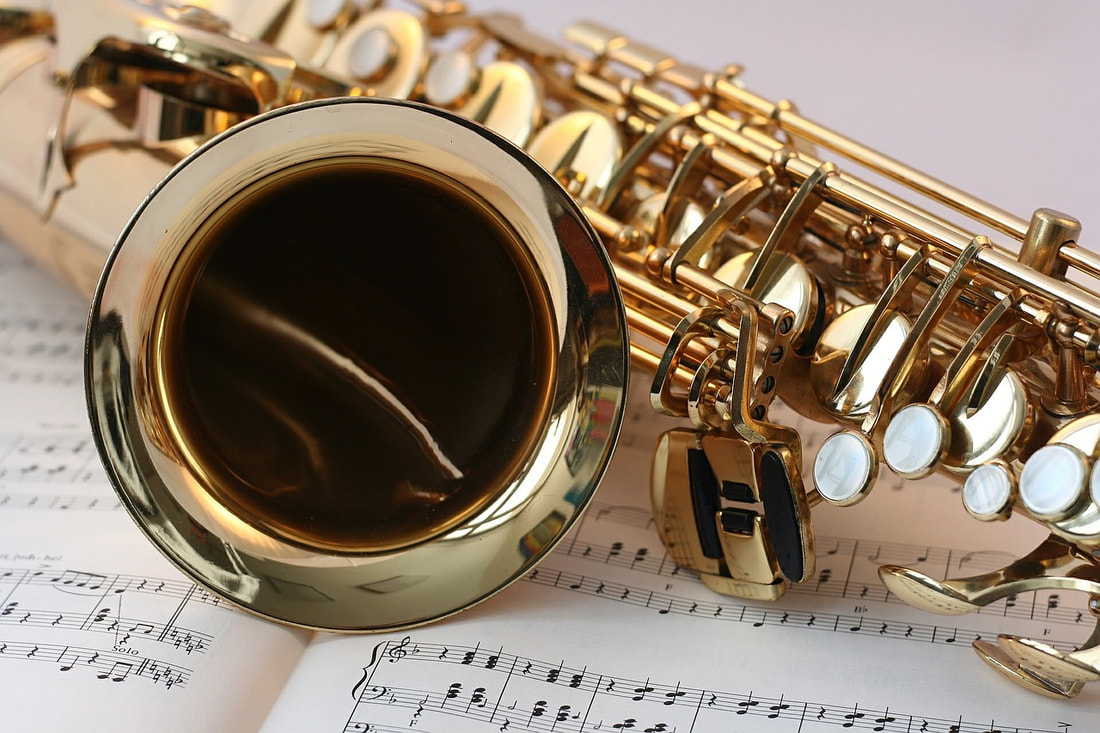
 RSS Feed
RSS Feed
